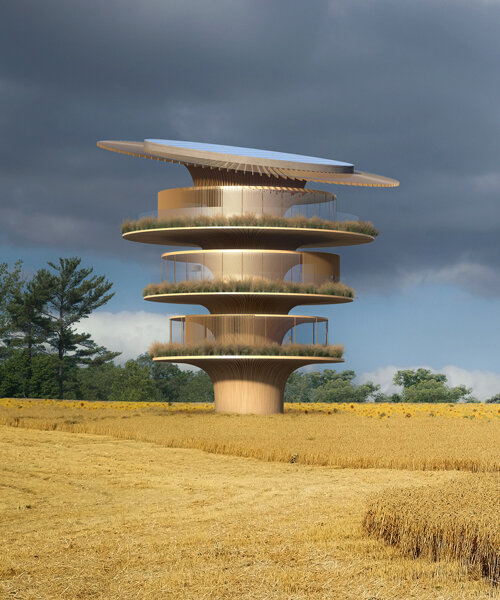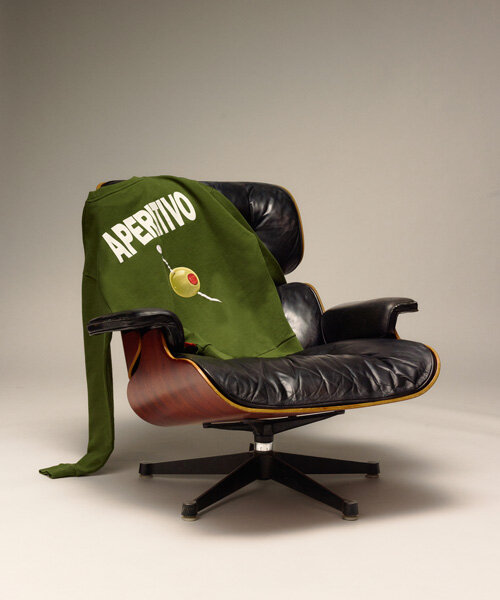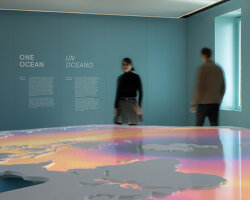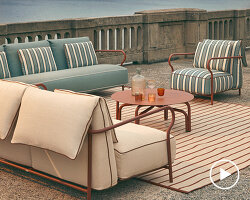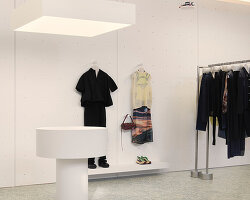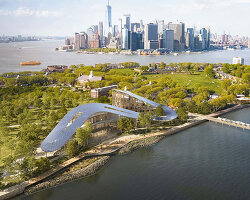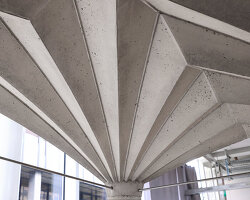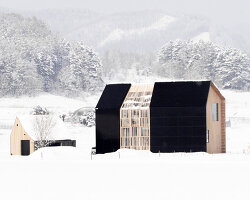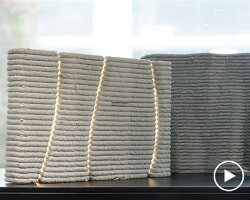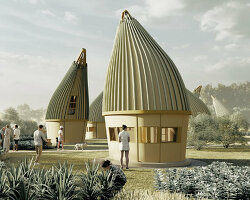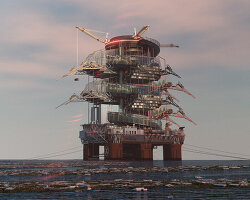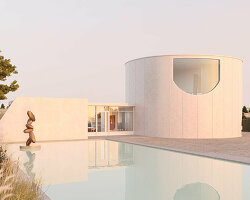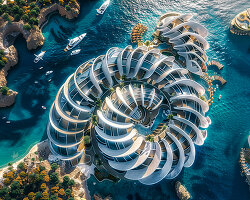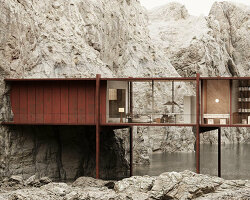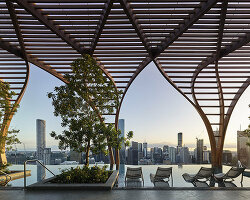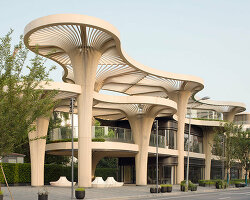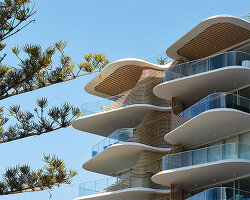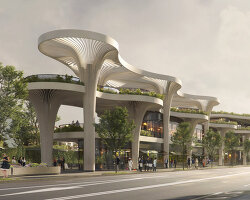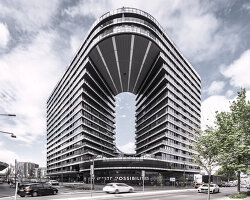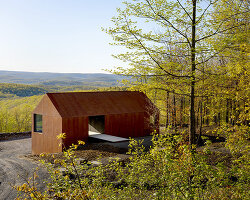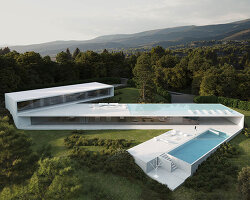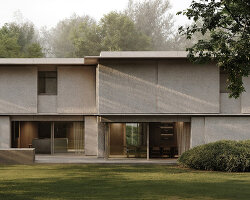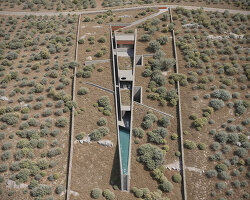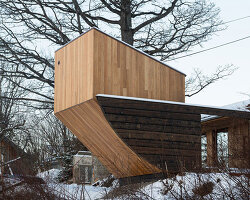‘form follows nature’ says koichi takada about his vision for a carbon positive single-family dwelling designed for the italian region of umbria. called ‘sunflower house’, the design is inspired by the distinctive yellow flower and the way it turns to face the sun. the project was commissioned by bloomberg green, who appointed takada to imagine the dream home of europe’s greener tomorrow.
just as the original bauhaus reshaped western architecture 100 years ago, the EU is calling for ‘a new european bauhaus movement’ to help achieve the bloc’s net-zero target by 2050. in october 2020, president of the EU, ursula von der leyen, called for a new climate project with ‘its own aesthetics, blending design and sustainability.’ to envision this future-proof, carbon-neutral aesthetic, bloomberg green asked koichi takada architects to pick a site in europe and design a house for it.
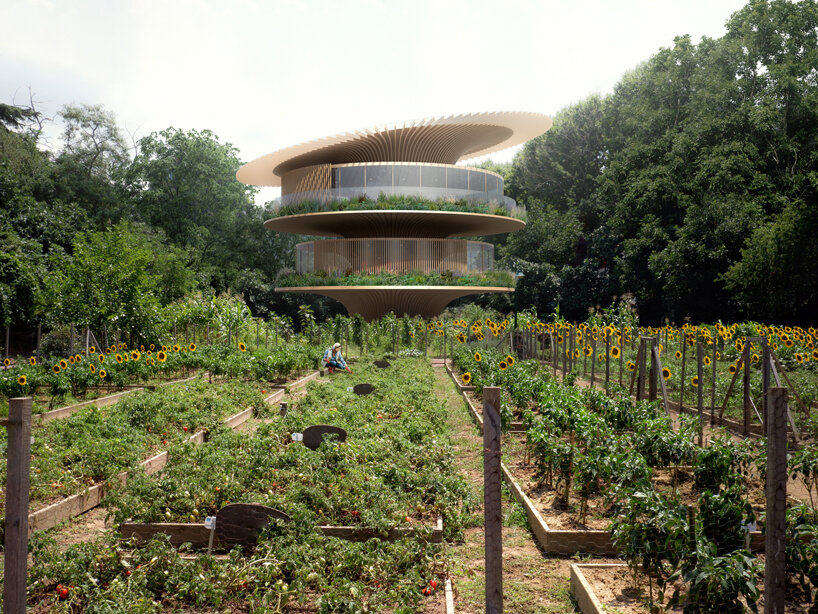
image by doug and wolf (also main image)
sunflower house is designed for the italian region of umbria, renowned for its rolling farmland and yellow fields of sunflowers, where heatwaves are becoming more frequent and extreme. elevated from the ground to minimize interference with the biodiversity of its surroundings, the solar panels on its petaled roof rotate on sensors for maximum sun exposure. ‘artificial structures require large foundations, but with sunflowers nature achieves a beautiful balancing act,’ says koichi takada. ‘there is minimum intervention on the ground so the earth has room for other activities, yet the sunflower magically nods its head to bathe in the light. the italian word girasole literally means ‘turn to the sun’.’
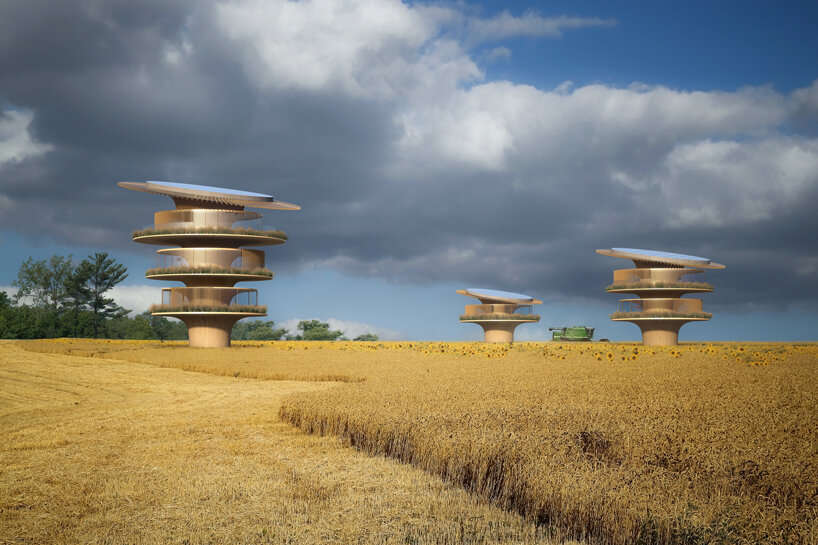
image by doug and wolf
the circular structure of sunflower house rotates around a central ‘stem’ to follow the sun, allowing the moving ‘disc florets’ to produce up to 40% more energy than static panels. energy that isn’t used can be fed onto the grid or stored in battery ‘seeds’ and rainwater is collected and used for irrigation and toilet flushing. the perimeter around the roof shades the windows below and aids in ventilation, and a secondary rotating mechanism over the glass walls protects the building from solar radiation.

image by doug and wolf
each floor of sunflower house hosts a two or three bedroom apartment, and each building can be as high as three storys. scalability opens up the possibility of creating a climate-positive neighborhood inspired by sunflower fields, in which the plants self-organize, unfurling in a zigzag pattern to avoid overcrowding and maximize exposure to sunlight. ‘designers and architects talk about drawing inspiration from nature in an aesthetic sense but we must go much deeper than that,’ says takada. ‘it’s not just about making a building look natural, it’s about creating positive environmental change in the homes we live in, the neighborhoods we work and play in, and ultimately the planet we are privileged to inhabit,’ he continues.
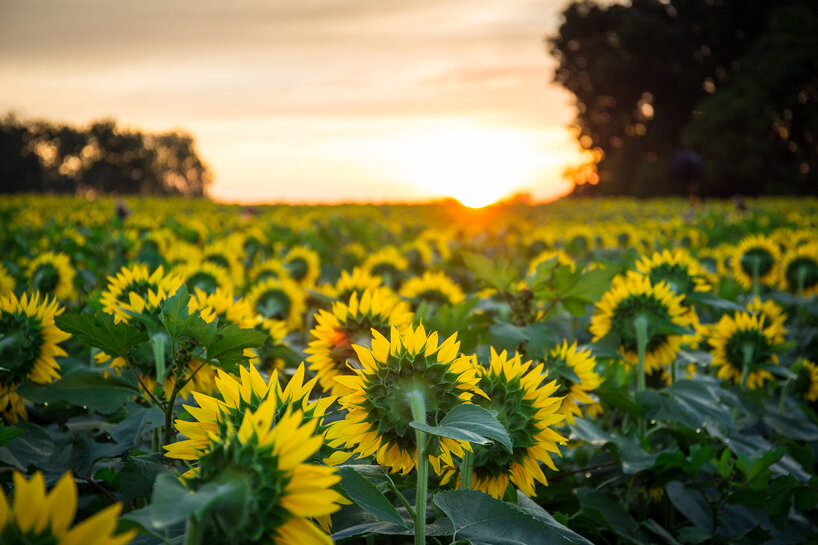
‘climate change must be a catalyst for positive change, beginning with our humble homes. ‘for the future of the planet we must shift from industrial to natural. we need a kinetic, living architecture that respects the environment while enhancing the wellbeing of the humans who inhabit it,’ comments takada.
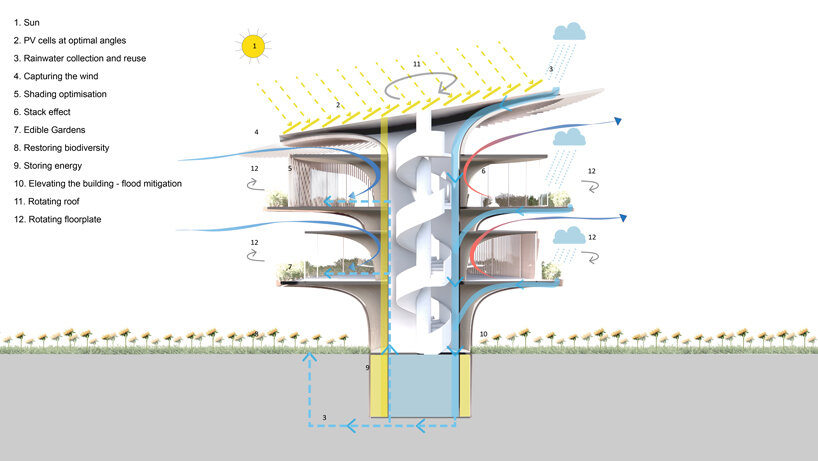
diagram by koichi takada architects
project info:
project name: sunflower house
client: bloomberg green
architects: koichi takada architects
location: umbria, italy
building type: single-family dwelling
status: unbuilt
CGI: doug and wolf
diagrams: koichi takada architects
